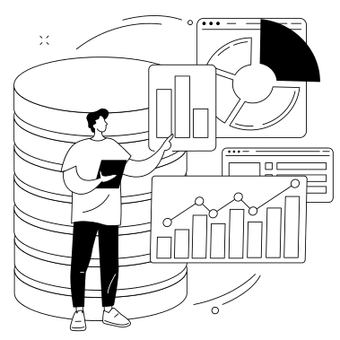Looking at the cost per lead across your paid media campaigns, especially paid search and social media can be deceptive. Too often we have seen that the campaigns with a low cost per lead hardly convert into enrolments. Optimising on a cost per lead often leads to false positives.
From an attribution modelling perspective, lead forms represent conversions that are deferred in time. The value of the conversion becomes known not when a potential customer clicks on a lead form submission button but later on when he/she becomes an opportunity and then enrols as a student at the school.
Many schools ask themselves on how to reduce the overall cost per enrolment.
Overall marketing spend
___________________
Number of enrollments
=
Cost per enrollment
Instead, you should ask yourself the question: “Which campaign brings me the lowest cost per enrollment?”
How to measure the cost per enrolment on a campaign level?
To get from cost per lead to cost per enrollment, the journeys which are stored in your web analytics platform and your CRM system (e.g. Salesforce) need to be matched together. Matching this information makes it possible for you to understand the complete journey before a lead becomes an opportunity or enrols as a student at the school.
Now each customer journey is captured and matched together across all touchpoints you can use this data to understand what channels played a role in the upper funnel (awareness), the middle funnel (consideration) and the lower funnel (purchase intent).
Some common patterns are that display and paid social activities do perform well in the upper funnel, email marketing performs well in the middle funnel and organic and branded search campaigns perform really well as closers.
How do we now optimize the marketing strategy to lower the enrollment costs as a second step?
Here we see the best results by applying an algorithmic model which gives each touchpoint credits based on probability. More about this can be read here.
We now divide the spend by the number of enrollments we are able to understand the true cost per conversion on a channel level.
This data will also be available on a campaign and even down to a keyword level and can now be used for optimizations.
You can read further information on the topic in the case study here.
How Cost per Enrollment’s helping you achieve your goals
Calculating and understanding your Cost per Enrollment (CPE) is a crucial step towards optimizing your admission and enrollment processes. Here’s how it can help you achieve success:
Better Budgeting
With knowledge of your CPE, you can make more accurate and informed decisions regarding your marketing budget.
For instance, if you know that it costs $50 to enroll a student, and your target is to fill 20 seats, you can estimate that you’ll need to allocate about $1,000 for this effort. This eliminates guesswork and ensures that you allocate resources appropriately.
Reduce Costs
Understanding what factors contribute most significantly to successful enrollments allows you to focus your resources where they’re most effective. This knowledge helps you invest more in those areas, ultimately reducing your CPE over time.
Earn Stakeholder Buy-In
Senior stakeholders are typically concerned with the bottom line. When you can present a measurable Return on Investment (ROI) for your enrollment efforts, it becomes much easier to gain their support for increasing your budget.
Demonstrating a clear connection between your efforts and tangible results not only helps secure resources but also establishes you as a leader who is contributing strategically to the institution’s growth.
Summary
Cost per enrollment (CPE) is a crucial metric that measures the total expense associated with acquiring one new student for your institution. This encompasses all the marketing costs from the initial engagement with the family to the point where they pay tuition and officially register.
Understanding your CPE is essential for several reasons:
- Cost Efficiency: It provides a clear picture of how efficiently you’re using your marketing budget to bring in new students. This knowledge allows you to allocate resources effectively.
- Comparative Analysis: It enables you to compare different marketing campaigns or strategies. For example, if you’re running two campaigns simultaneously and one has a lower CPE than the other, you know that the more cost-effective campaign is likely the better option.
- Optimizing Strategies: It helps you identify which marketing channels or strategies are most effective in driving enrollments. This information allows you to focus your efforts and resources where they’ll have the most impact.
- Maximizing Enrollments: Ultimately, the goal is to attract the highest number of enrollments while keeping the acquisition cost as low as possible. Knowing your CPE is key to achieving this balance.

Try Windsor.ai today
Access all your data from your favorite sources in one place.
Get started for free with a 30 - day trial.